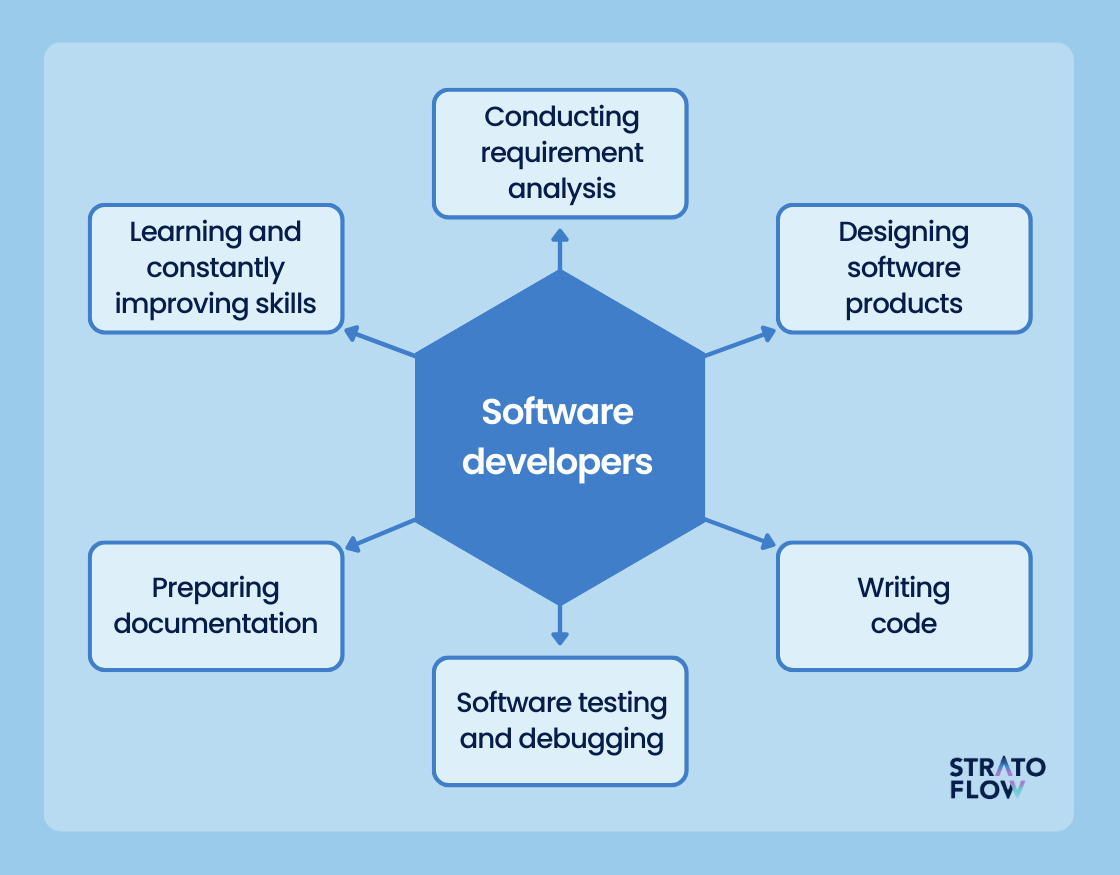Enhance Your Projects with Reliable Software Development Staff Augmentation
Enhance Your Projects with Reliable Software Development Staff Augmentation
Blog Article
Committed Developers vs. In-House Teams: Which Is Right for You?
The choice between making use of specialized developers and maintaining an internal team is a substantial one that can impact the trajectory of your tasks and general organization technique. Committed developers give a level of versatility and specialized expertise that can be beneficial for details, short-term campaigns. Conversely, internal groups add to a cohesive business society and a nuanced understanding of long-lasting objectives. By analyzing crucial aspects such as budget, project range, and preferred control, you can much better determine which strategy aligns with your organizational needs. The ramifications of this selection expand beyond instant results-- consider the wider impact on your company landscape.
Comprehending Committed Programmers
The growing demand for specialized abilities in the tech market has led to the emergence of dedicated programmers as a sensible remedy for numerous companies. These experts are normally acquired on a task basis, enabling companies to utilize certain competence without the long-term dedication related to full-time hires. Committed developers are often ingrained within a client's team, giving versatility and scalability to meet project requirements.
This version permits companies to access an international ability pool, which is specifically helpful in a rapidly advancing technological landscape. Committed designers can be sourced from numerous geographical locations, ensuring that business can locate the best skill established at competitive rates. They typically bring a riches of experience and expertise, having actually dealt with diverse tasks across various markets.
Moreover, specialized designers can focus solely on the jobs available, enhancing performance and effectiveness. They are geared up to integrate perfectly right into existing workflows, working together very closely with in-house groups to attain task purposes. This method not only reduces the problem of employment and training however also allows organizations to continue to be nimble, adapting swiftly to changing market demands and technological improvements.
Benefits of In-House Teams

In addition, internal groups tend to have a deeper understanding of the company's mission, values, and objectives. This positioning can boost staff member interaction and inspiration, as staff member feel extra connected to their job and the organization's success. Furthermore, having a dedicated in-house group enables better placement of methods and purposes, as these members are constantly concentrated on the firm's concerns.
Internal teams additionally help with quicker decision-making procedures, as they can respond a lot more rapidly to adjustments and difficulties. The established connections and knowledge with company methods enable structured operations and reduced miscommunication. Inevitably, the combination of a cohesive society, placement with organizational goals, and reliable communication makes in-house teams a beneficial asset for lots of organizations, especially those looking to cultivate lasting development and advancement.
Cost Factors To Consider
When evaluating price considerations, both internal groups and dedicated designers existing distinct financial ramifications for companies. Involving dedicated developers commonly involves a pay-per-project or hourly rate model, which can be cost-efficient for businesses with varying job demands. This technique permits flexibility in scaling resources up or down, ensuring that business only pay for the services they need.
On the other hand, in-house teams entail fixed prices, consisting of wages, benefits, and overhead costs such as workplace and equipment. While this design supplies higher control and instant availability of resources, it may result in greater lasting costs, especially if the work does not warrant a permanent team.
Additionally, firms must think about the hidden prices connected with recruitment and training of in-house staff members, which can even more stress budget plans. In some cases, the moment and resources spent on handling an in-house group can diminish the company's core business purposes.

Task Management and Versatility
Job administration and versatility are important elements that affect the choice between in-house teams and committed designers. Dedicated groups usually have actually established processes for managing jobs properly, leveraging specific approaches like Agile or Scrum, which help with repetitive development and adaptability.

Inevitably, the option in between in-house groups and devoted developers depends upon the desired level of adaptability and the details task monitoring needs. Firms have to review their functional dynamics, project complexity, and source schedule to establish which alternative lines up finest with their tactical objectives.
Making the Right Choice
Picking the ideal growth method-- internal groups or devoted programmers-- requires a cautious analysis of various aspects that align with a business's critical goals. On the other hand, internal groups can provide much better connection and integration with existing workers.
Following, review your budget. Devoted programmers frequently provide a cost-effective service for temporary tasks, while internal groups may incur greater lasting expenditures due to salaries, advantages, and expenses costs. Examine the level of control and cooperation wanted; in-house groups usually cultivate more powerful communication and placement with firm culture.
If immediate outcomes are necessary, committed developers can be onboarded quickly, whereas building an internal team takes time for employment and training. If continuous advancement is essential, investing in an in-house group may yield much better returns over time.
Final Thought
In verdict, read here the choice in between devoted designers and in-house groups pivots on project needs and organizational goals. On the other hand, in-house teams grow a cohesive society and much deeper positioning with long-lasting objectives.
The decision between utilizing committed developers and keeping an internal group is a considerable one that can affect the trajectory of your projects and general company technique.Task management and adaptability are crucial elements that affect the selection between internal teams and specialized designers. browse around this web-site offshore software development.In comparison, internal teams may excel in preserving a regular task administration structure due to their experience with the organization's culture and lasting objectives. Committed programmers commonly present a cost-efficient option for temporary jobs, while internal teams may incur higher lasting costs due to incomes, benefits, and expenses prices.In verdict, the choice between in-house groups and committed designers hinges on job requirements and business objectives
Report this page